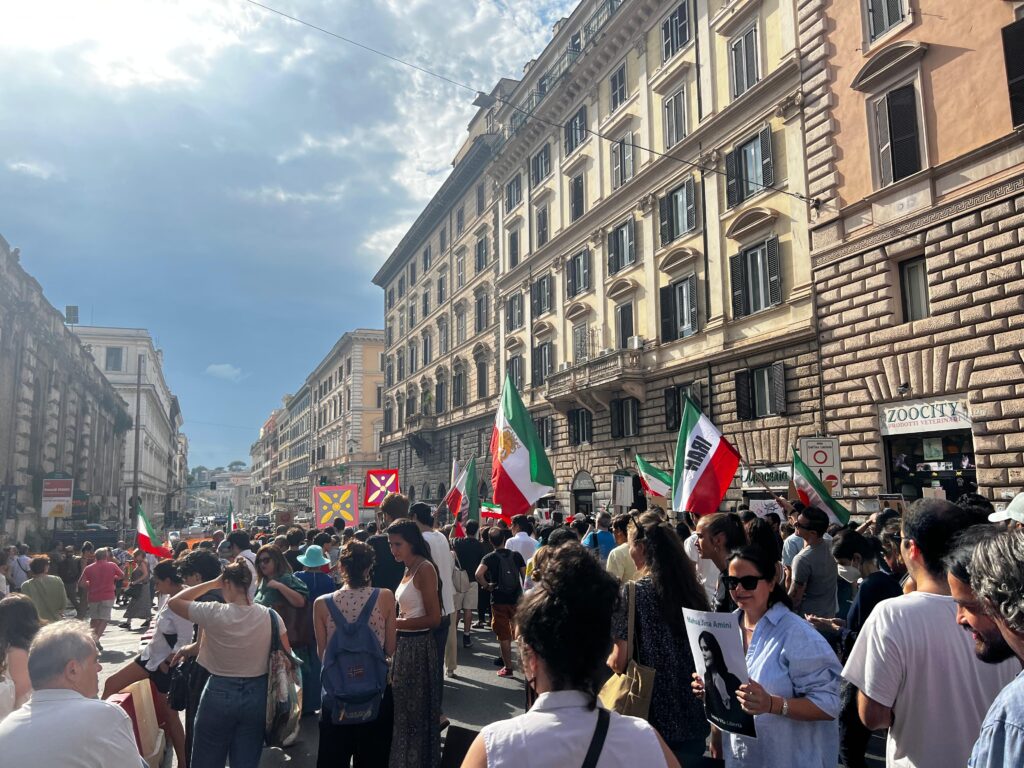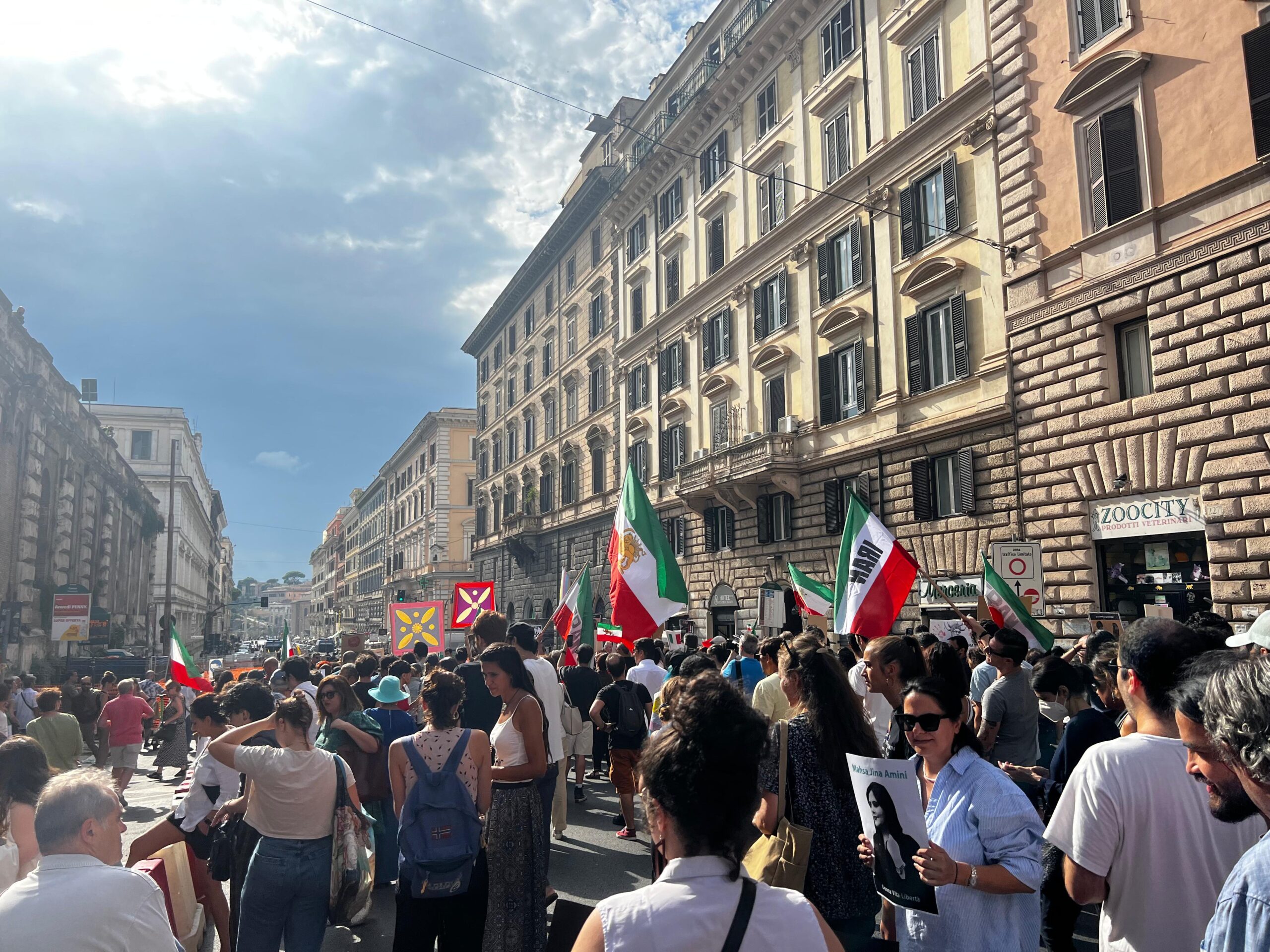Authors: Ilaria Larusso, Margherita Ceserani, William Kingston-Cox, Shahin Modarres - Iran Team
Introduction
On 16 September 2022, the Iranian’s morality police - the Guidance Patrol - arrested 22-year-old Iranian woman Masha Amini for allegedly not wearing the hijab in accordance with the proscribed governmental legislation. Whilst in custody, the Iranian authorities claimed she had suffered a heart attack, leading to her death. However, many witnesses reported that Amini had been severely beaten and that her death was the direct consequence of Iranian police actions.
Her death has sparked widespread protests and civil unrest - commonly known as the Masha Amini protests - whose advocates seek to topple the Iranian regime, bring about the reintroduction of the protection of civil and political rights for women, enforce the revocation of mandatory hijab and other religious morality laws, as well as the dissolution of the Guidance Patrol. However, Amini’s death has served as a catalyst, rather than a creationary force, for Iranian resistance against the system.
As such, this article explores the history of the women’s movement in Iran since 1979, the year the mandatory hijab laws were introduced, as well as the history of Iranian civil disobedience against the government, to assess and analyze what, if anything, has changed since the death of Masha Amini.
Women’s movement in Iran since 1979
Clearly, the rise to power of Khomeini’s theocratic rule in Iran brought significant transformations in the country as a whole. Nevertheless, the aftermath of the 1979 Revolution for Iranian women particularly underwent considerable changes, spread across every aspect of their lives as citizens and human beings. The advancements women conquered during the White Revolution, a modernization period guided by the last Shah just before the monarchy was dismissed, suffered important steps back due to the strict interpretation of Sharia law - i.e., legislation determined by Islamic religious texts. The latter immediately manifested itself, for instance, with the elimination of the 1967 Family Protection Law right after Khomeini rose to power, eliminating rights for women and mothers and re-establishing strict patriarchal standards.
On the other hand, the restriction of rights was promptly matched with manifestations of women voicing their discontent towards these setbacks - the first one ever after the revolution was symbolically held right in 1979, on International Women’s Day in relation to the mandatory enforcement of the veil. What has always been peculiar about women’s movements in Iran is the bi-partisan character of the arguments used in support of gender equality. These theoretical grounds are not traceable back to a single source: as a result, Islamic theses intertwine with socialist and liberal arguments in an essential way. Accordingly, an indigenous trait of Iranian feminism resides precisely in its capacity to bring together diverse forces which, despite internal disagreements, all aim at achieving female autonomy and true empowerment. It is symbolic that, as they protested the Shah for prohibiting the veil in the second half of the 1930s, after the revolution the movement was taking the streets for the exact opposite reason.
Throughout the initial years of the Islamic Republic’s existence, Iranian women managed to regain some of the spaces that were taken away from them with the establishment of the new regime - first and foremost, judicial courts and public institutions. Female active involvement in the Iran-Iraq war from 1980 to 1988 was also praised by the main members of the clergy. However, with Ayatollah Khamenei (since 1989), an even more rigorous religious rule further enhanced gender inequalities to the detriment of women. This political phase for activists also saw the increasing involvement of female-based press, as exemplified by the well-known Zanan magazine founded in 1992. Feminist media helped voice the constellation of perspectives and opinions that ultimately all advocated for the liberation of women and their reproductive, social and political rights. The situation fluctuated between reformist and conservative governments from 1997 to 2008. Conservative leader Ahmadinejad chose a particularly hard line towards gender equality, closing Zanan and arresting activists involved in the One Million Signature campaign. Tensions between the government and social movements reached their peak in 2009, after the controversial vote that saw Ahmadinejad's re-election. The Green Movement, the name given to the pro-democracy force that took the streets in those days, saw many Iranian women as protagonists and proactive agents of change. The non-violent protests - features strongly advocated and adopted by Iranian feminists - were suppressed by the authority, leading to the death of civilians such as Neda Agha-Soltan and the arrest and torture of several thousands of people.
Rouhani’s rule, starting in 2013, can be seen as a phase in between for the women’s movement: some legal victories were achieved, but broader changes remained unseen. Concerning the number of activists sentenced to decades of years in prison and controversial trials, together with episodes like the suicide of Sahar Khodayari after her arrest for having attended a football match explain very vividly what is the context in which Iranian women live and organize their civil resistance. As a consequence, it did not come as a surprise that further uprisings occurred when, in September 2022, the news that Mahsa Amini had died, after being detained by the Iranian morality police, reached the broader public.

Iranian women in the aftermath of Mahsa Amini’s death
The protests in the aftermath of Mahsa Amini’s death have once more expressed the power of Iranian women to make their voices heard within Iran as well as obtaining global resonance thanks to the power of social media (i.e. via X). Since September 16th of last year, the burnt veil has become a prominent symbol, disseminating rapidly a willingness for political change across the country. Women activists of all kinds have stood up for equal rights, such as the right to be equal under the law, one’s freedom in the public sphere - including the right to choose one’s clothing - and the right to participate equally in political life. Indeed, the Woman, Life, Freedom Movement is not addressed to a specific audience, but instead, it welcomes any religious, or secular, people of any gender, and sends to the government the clear message that part of the Iranian population is at odds with its current tightness.
Although the veiling order was not strictly applied formally, during the last year systematic attacks on the female gender have occurred starting from November 2022. One of the most notorious cases is the poisoning in schools, which according to the UN hit more than 1200 young girls. The state reaction to these events was slow and inadequate compared to the quick deployment of personnel during the protests, also considering that the words pronounced by the Iranian Interior Minister reduced the attempts to undermine the activists cause to simple stress due to exams.
The restriction to freedom of speech shortly followed, once again targeting those who were advocating feminist activism, such as journalists and lawyers. Examples would be plentiful, however, it is worth remembering the irregular trial of Niloofar Hamedi and Elaheh Mohammadi in May and again in July 2023. After 8 months of custody, both the women were judged for exposing Amini’s death and inciting protests against national security. Law has been used as a tool to intimidate Iranians, retain them from joining the Movement and gain feminist consciousness. Indeed, it has been reported that several other journalists have perished in an effort to raise the voices of the activists instance.
More recently, the Iranian government has presented a pro-Islamic dress code bill, then adopted by the Parliament on August 13th, now it is waiting for the approval of the Guardian Council. The implementation of such a law could envisage gender segregation in public spaces, fines and between 5 and 10 years of prison for women not correctly wearing the compulsory headscarf, as well as for businesses who may host such women, and the reduction of the owner’s income up to 3 months.
All in all, the woman's body affair is becoming an ever more political matter if we consider that in March 2024 elections will be held in Iran and that the burnt hijab is denoting the urge for democratization. Nevertheless, it is hardly realistic to expect the Movement to turn into a political party or for existing parties to take over the feminist demand for reform.
In the wake of Mahsa Amini's tragic death in September 2022, a significant transformation has swept across Iran. This article explored the history of Iranian women's activism since the 1979 Revolution, revealing a narrative of resilience and commitment to gender equality.
Throughout the years, Iranian women have consistently voiced their grievances, enduring hardships and championing civil disobedience as a means to assert their rights. Amini's death served as a catalyst, sparking renewed protests demanding equal rights, freedom of expression, and the repeal of repressive laws.
However, these efforts have faced staunch opposition from the Iranian government, which has responded with tough measures, including systematic attacks on women and limitations on freedom of speech. A proposed pro-Islamic dress code bill adds to these concerns.
The Woman, Life, Freedom Movement embodies hope for a more equal system, although it may not become a formal political entity. Mahsa Amini's tragedy has not only mobilized Iranian women but has also ignited a global conversation about their rights and the need for change in Iran.
In conclusion, Amini's death has galvanized Iranian women, highlighting their resilience and commitment to justice. Their contest continues, serving as a reminder that the pursuit of equality and freedom knows no boundaries

No comments.